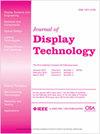The Effect of Computer-Aided Rehabilitation on Creativity and Computer Problem Solving
Q Engineering
引用次数: 0
Abstract
The present study aims at investigating the effect of computer-aided rehabilitation on creativity and computer problem solving of industrial design students at the Islamic Art University of Tabriz. A semi-experimental design with two groups of subjects, each consisted of 15 people, the research uses a computer-aided program along with London Tower Computer Tower and Abedi’s Creativity Test. At first, an announcement was given in the industrial design faculty of Islamic Art University of Tabriz in 2016 to introduce the experiment and those students, willing to attend the experiment, submitted. Among the submitted, 30 students have been initially chosen in random, then to get divided again randomly in two groups with 15 members each. One is the subject group and the other, the control. Prior to taking the test itself, both groups have been given a creativity and problem solving pre-test. In the next 2 months, the subject group has been given rehabilitation, while the control group has not. After the mentioned time, both groups have taken a creativity and problem solving post-test and comparisons between the pre-test and post-test have been done afterwards. Data analysis has been performed by means of SPSS software program, version 21, based on multivariate covariance analysis, to show that the mean scores of pre-test and post-test of both subject and control groups have varied so significantly (P <0.01) that the computer-aided rehabilitation has improved in creativity and problem solving in the former. Considering the positive effects of this method on improvement of creativity and problem solving of industrial design students, the study shows that computer rehabilitation could be used as a method to achieve optimal performance among industrial design students.计算机辅助康复对创造力和计算机问题解决能力的影响
本研究旨在探讨计算机辅助康复对大不里士伊斯兰艺术大学工业设计专业学生创造力和计算机问题解决能力的影响。这是一项半实验设计,分为两组,每组15人,研究使用计算机辅助程序以及伦敦塔计算机塔和阿贝迪的创造力测试。最初,大不里士伊斯兰艺术大学工业设计学院于2016年发布了一份公告,介绍该实验,并邀请愿意参加实验的学生提交。在提交的学生中,最初随机选择30名学生,然后再次随机分为两组,每组15人。一个是被试组,另一个是对照组。在参加测试之前,两组都进行了创造力和问题解决能力的预测试。在接下来的2个月里,实验组接受康复治疗,对照组未接受康复治疗。在上述时间后,两组都进行了创造力和解决问题的后测,并在后测中进行了前测和后测的比较。采用SPSS 21版软件进行数据分析,基于多变量协方差分析,结果显示,被试组和对照组的前测和后测均分差异显著(P <0.01),说明计算机辅助康复在被试组的创造力和问题解决能力上有显著提高。考虑到该方法对提高工业设计专业学生的创造力和解决问题的积极作用,研究表明计算机康复可以作为工业设计专业学生实现最佳绩效的方法。
本文章由计算机程序翻译,如有差异,请以英文原文为准。
求助全文
约1分钟内获得全文
求助全文
来源期刊

Journal of Display Technology
工程技术-工程:电子与电气
CiteScore
1.50
自引率
0.00%
发文量
0
审稿时长
2.8 months
期刊介绍:
This publication covers the theory, material, design, fabrication, manufacturing and application of information displays and aspects of display technology that emphasize the progress in device engineering, design and simulation, materials, electronics, physics, and reliability aspects of displays and the application of displays. The Journal is sponsored by EDS, seven other IEEE societies (BT, CES, CPMT, IA, IM, PHO and SSC) and the Optical Society of America (OSA).
 求助内容:
求助内容: 应助结果提醒方式:
应助结果提醒方式:


